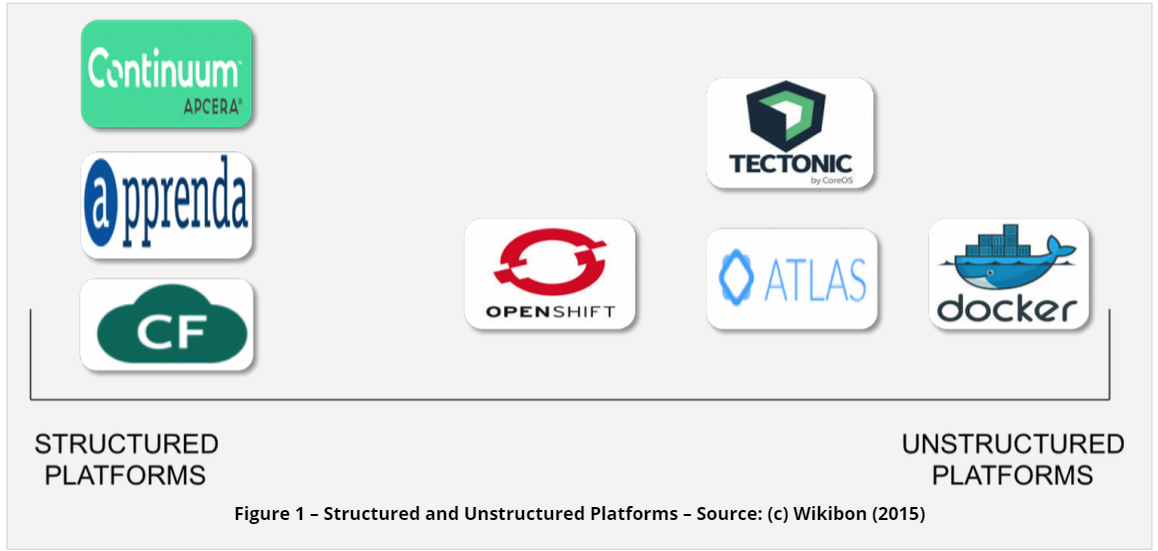 NEWS
NEWS
 NEWS
NEWS
 NEWS
NEWS
The leading cloud-native application platforms are diverse in their design, capabilities and histories. In part this reflects the different needs of their creators or target audiences, in part the different uses and kinds of cloud applications they are used to create. And in part, perhaps, this reflects the immaturity of the technology; no consensus has yet developed on what a cloud native development environment or platform-as-a-service (PaaS) should encompass. And no one platform will be right for all organizations or all uses.
In the second installment of his ongoing series of Professional Alerts on cloud native application platforms, Wikibon Analyst Brian Gracely takes a close look at the capabilities of seven leading core platforms – Apcera Inc.’s Continuum, Apprenda Inc.’s Apprenda, CoreOS Inc.’s Tectonic, Docker Inc.’s Dock, HasiCorp Inc.’s Atlas, Pivotal Software Inc.’s Cloud Foundry and Red Hat Inc.’s Openshift v3 (Enterprise). Some of these are also the basic technologies for other platforms – notably Pivotal Cloud Foundry is the foundation for both IBM’s Bluemix and Hewlett Packard Co.’s Helion. These are not included in the analysis separately. Rather Cloud Foundry is studied as the reference platform all members of the Cloud Foundry Foundation including Hewlett-Packard Enterprise, Inc., and IBM. Gracely warns that different implementations will have some variances in features.
Evaluating these seven platforms in depth is a complex process. They are optimized for different types of applications and scaling and target different customer environments. In this analysis Gracely answers five questions about each:
The report also highlights unique capabilities for each platform around aspects of identity management, policy management and security.
All modern platforms abstract the underlying infrastructure to allow applications to run consistently across multiple clouds. They can directly deploy applications to use the unique capabilities of each cloud (AWS, Microsoft Azure, GCE, vSphere, Openstack, etc.). This allows the platforms to build the application environment specific to a cloud without creating issues of translation or interoperability.
All of the platforms in the list are five years old or less. All are evolving rapidly, so fast that some have released their second or third generation architectures, often rewriting significant elements to align to changing market demands or shifts in community sentiment, for instance about open source technologies.
Teams investigating development platforms should understand that application packaging, staging, delivery and lifecycle management are complex sets of processes. The choice of whether to build all these elements into a platform or acquire a more defined, structured platform is one of the most critical decisions facing CIOs in the next two-to-three years. It will be define not only the kinds of applications that will be built but also how the organization is structured to deliver these Cloud Native applications.
The full report includes analyses of all seven of the core platform technologies. It and the first research Note in the series, “Cloud Native Application Platforms – Structured and Unstructured” are published in full on the Wikibon Web site.
THANK YOU